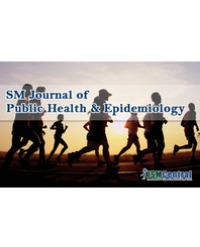
A Comment on Universal Healthcare in Africa
Achieving highest attainable standard of mental and physical health is a universal goal. Many countries around the world consider good health as a characteristic of a democratic system
Shamizoo Brutus*


Achieving highest attainable standard of mental and physical health is a universal goal. Many countries around the world consider good health as a characteristic of a democratic system
Shamizoo Brutus*
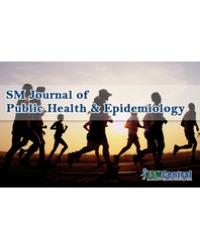
Anthrax is an infectious disease caused by the bacteria Bacillus anthracis. The disease can affect both humans and animals, although it is more common among livestock and wild animals. The objective of this seminar is to review on anthrax and its public health importance. The disease occurs in herbivorous animals either through inhalation or the spores during grazing. Carnivorous animals are infected by consuming the affected herbivorous animals, whereas, infection in humans usually occurs through contact with the spores either through ingestion, inhalation or direct contact. The disease does not spread from infected persons directly and spores are the source of infection; since the spores of Bacillusanthracis are extremely resistant to natural condition and can survive for several decades in the environment. The spore enters in to the body and causes serious outbreak in tropical and sub-tropical countries with high rainfall. The clinical sign of the disease are characterized by sudden death, fever, staggering and in human it is pulmonary, cutaneous and gastrointestinal forms. The disease is diagnosed by giemsa or polychrome methylene blue and culture. It is evident that control of the infected animals, prevention of contact with the infected animals and contaminated animal products are quite important to disease control. It is recommended that if an animal anthrax case is confirmed, the affected property is quarantined, potentially exposed stock vaccinated; dead animals buried and contaminated sites disinfected. Bacillus anthracis are susceptible to different antibiotics like penicillin, chloramphenicol, streptomycin, tetracycline and erythromycin.
Ahmed Mohammed*
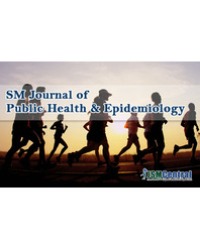
Background: Diagnostic Ultrasound (dUS) images capture acoustic measures. Higher level of acoustic measures may increase the likelihood of adverse neurodevelopment.
Objective: To develop a computerized algorithm to extract acoustic measures from dUS images.
Method: The dUS images of 484 pregnant women in 2014 were extracted from the Electronic Medical Record (EMR) system within an integrated healthcare organization. The retrieved dUS images were processed by the optical character recognition engine, Tesseract, to recognize the embedded texts. A set of matching patterns was constructed to extract the values associated with Thermal Index (TI), Mechanical Index (MI) and transducer frequency from these recognized texts. A sample of 200 randomly selected dUS images was processed by the computerized algorithm and results were compared against the gold standard of perinatal expert reviews.
Results: 54,909 dUS images were extracted from the EMR system. 52,637 of them had at least one of acoustic measures. The mean of extracted TI, MI and transducer frequency were 1.05, 1.08 and 4.34(MHz), respectively. Higher frequencies of dUS (5-7 MHz), higher MI (≥1.00) and higher TI (≥1.00) were used during first trimester, first/second trimesters and second/third trimesters, respectively. The computerized algorithm achieved a performance with sensitivity of 99.0%, 93.3%, 62.0% and positive predictive value of 100.0%, 99.5%, 95.8% for TI, MI and transducer frequency, respectively.
Conclusions: Our study successfully developed a computerized algorithm to extract TI, MI and transducer frequency from dUS images. Implementation of this algorithm can provide values for examining potential effects of acoustic measures on perinatal outcomes and evidence-based decision making.
Fagen Xie¹*, Chaba Sandor², Don A Lewis² and Darios Getahun¹
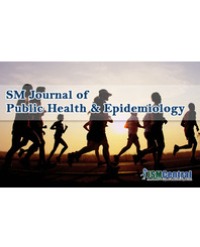
Objectives: The Diabetes Self-Management Questionnaire (DSMQ) has been judged a better statistical predictor of glycaemic control relative to the widely used Summary of Diabetes Self-Care Activities Measure. Our aim was to assess the psychometric properties of an adapted 14-item DSMQ among Nigerians with diabetes at the University of Port Harcourt Teaching Hospital, Port Harcourt, Nigeria.
Methods: The DSMQ was administered to 119 type-2 diabetes patients, selected by stratified sampling, as part of diabetes perceived severity study. The DSMQ with its 4 subscales was tested for reliability using inter item correlation and Cronbach’s alpha; and criterion-related, concurrent validity against fasting blood sugar, the existing measure of glycaemic control. Confirmatory Factor Analysis (CFA) using Principal Component approach was conducted for factor-based construct validity.
Results: Cronbach’s alpha was 0.48 for the sum scale, 0.45 for the GU subscale, 0.07 for the DC subscale, 0.18 for the PA subscale and 0.12 for the HU subscale. The mean-item correlation was 0.75. CFA with rotation using the Oblique Oblimin extracted 4 factors that all items correlated satisfactorily with. For the GM subscale 3/5 items loaded into one component, 2/3 items of the PA subscale and 2/3 of the DC subscale. Pearson correlation between the DSMQ sum score and the current blood glucose was -0.13 (p=0.16).
Conclusion: The DSMQ-14 tool and its subscales demonstrated moderate internal consistency. Though a four-component construct was validated, it was divergent from the original subscales. Concurrent validity was also not confirmed between the DSMQ and fasting blood sugar. The DSMQ deserves further testing and adaptation for local use.
Seye Babatunde¹,²* and Roseline Onu²
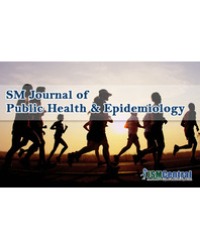
Objective: The study was designed to investigate the knowledge of the prevention and management of tuberculosis among residents of Bambuka Community Karim-Lamido Local Government Area of Taraba State.
Methods: The study employed a cross-sectional study design carried out among 200 residents of Bambuka community selected using a multi-stage sampling technique. A questionnaire was used to collect the data which was analysed using SPSS version 20.0 and presented in frequencies and charts. Inferential statistics was analysed using Chi-square at P
Methods: The study employed a cross-sectional study design carried out among 200 residents of Bambuka community selected using a multi-stage sampling technique. A questionnaire was used to collect the data which was analysed using SPSS version 20.0 and presented in frequencies and charts. Inferential statistics was analysed using Chi-square .
Results: The results show that two third of the respondents 134(67.0%) were males with more 50(25.0%) between the ages of 30-35 years. Majority 88.0% and 91.0% were knowledgeable of TB and TB prevention respectively. Furthermore, majority 69.0% demonstrated poor knowledge of TB management. Both gender and educational status were not significantly associated with knowledge of TB (P>0.05).
Conclusion: The study revealed knowledge gap in management of tuberculosis, including the etiology of TB. Furthermore, the study revealed there was no DOTs centre in the community. Therefore the study recommends more awareness campaign in the prevention and management of the disease especially in hard to reach rural areas in order to reduce the morbidity and mortality associated with the disease.
Agofure Otovwe¹*, Okandeji-Barry Oghenenioborue Rume Ataekiru¹, Musa Enoch¹ and Odjimogho Stella²